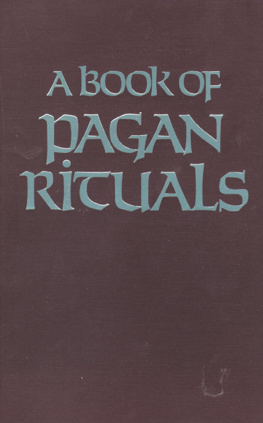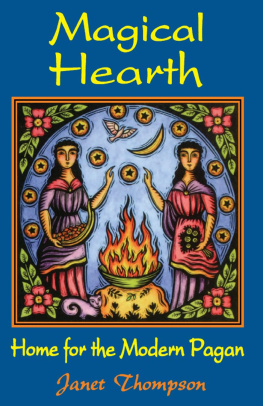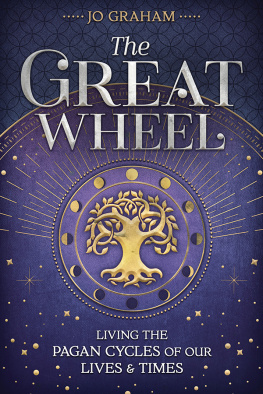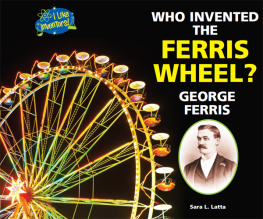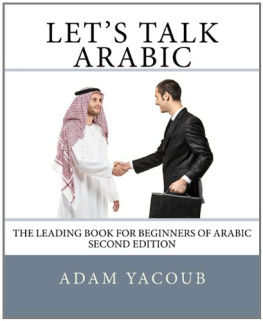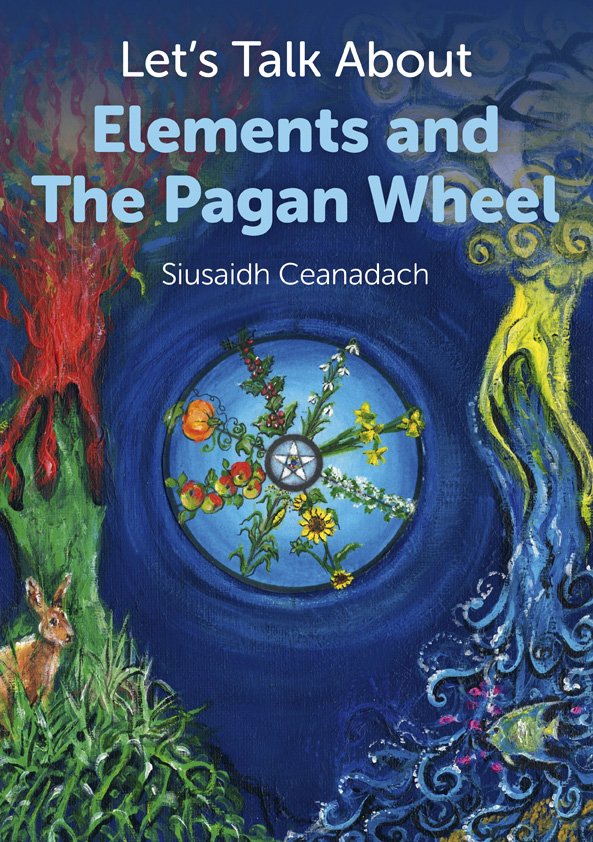Lets Talk About Pagan Elements and the Wheel of the Year
Siusaidh Ceanadach

Winchester, UK
Washington, USA
First published by Moon Books, 2013
Moon Books is an imprint of John Hunt Publishing Ltd., Laurel House, Station Approach, Alresford, Hants, SO24 9JH, UK
office1@jhpbooks.net
www.johnhuntpublishing.com
www.moon-books.net
For distributor details and how to order please visit the Ordering section on our website.
Text and illustrations copyright: Siusaidh Ceanadach 2012
ISBN: 978 1 78099 561 8
All rights reserved. Except for brief quotations in critical articles or reviews, no part of this book may be reproduced in any manner without prior written permission from the publishers.
The rights of Siusaidh Ceanadach as author have been asserted in accordance with the
Copyright, Designs and Patents Act 1988.
A CIP catalogue record for this book is available from the British Library.
Design: Stuart Davies
Printed and bound by CPI Group (UK) Ltd, Croydon, CR0 4YY
We operate a distinctive and ethical publishing philosophy in all areas of our business, from our global network of authors to production and worldwide distribution.
CONTENTS
Introduction to the Elements
In the first Lets Talk book we covered the eight festivals of the Wheel of the Year, the solar festivals and the fire festivals or cross quarter festivals. Lets take this one step further now and bring in the four elements which are linked to directions, bringing them into their place on the Pagan Wheel of the Year. If you havent read the first Lets Talk book there is no need to worry, you dont have to read both books. I will explain a bit about the festivals of the Wheel of the Year later in this book too.
First let me introduce the classical elements.
There are four classical elements; Air, Fire, Water and Earth and the fifth element is the unseen one, Spirit. Spirit comes into everything and is symbolised by the circle; the unseen super-natural protection that we feel comes from the flow of the Universal Spirit, or Awen or Holy Spirit. In Judeo/Christian terms the word translates to spirit or wisdom so it would seem that humans came to the same understanding in the Middle East as we did here in Europe.
The classical elements we use today come from the ancient Greek civilization and were used in Europe in the Middle Ages in the development of alchemy, which was the beginnings of early science.
Lets look into the classical elements, starting with Air .
Air is linked to the direction of East here in Britain, but the direction can change depending on where you live. The colour yellow is the main colour for the Air and the East and this symbolises light, wind/breeze, freshness and mental agility. Subjects linked to Air include mathematics and music. This element is also linked on the Wheel of the Year to the spring, from the first very early awakening of spring moving, as the year turns on, to the Spring Equinox or Vernal Equinox, also known as Ostara.
The kind of colour yellow linked to the element of Air is a sharp citrus yellow, the colour of daffodils. The season bursts into colour around the third week of March here in Britain, but if you live in the southern hemisphere then its going to be about the third week of September.
Everywhere in the town gardens, in the city parks and by the sides of the roads in the countryside bright yellow flowers come into bloom, followed about a week or so later by their white, orange-centred cousins. You can measure the year in flowers; very early spring brings us the pure white snowdrops, then as the season progresses, out come the white, purple and yellow crocuses. Then the yellow daffodils, the peacock-eyed narcissi, and just a few weeks later a blue carpet of wild bluebells grace the woods, brought on by the light coming directly through the bare leafed trees to the floor of the woodland.
Everything in nature is earnest, bright, promising and eager to burst into bloom. And that is very much the feeling of this element; its like a fresh breeze on a cold and sunny morning.
Fire is next and in Britain or Europe is linked to the South. The colour of the element Fire is red and brings passion, heat, and energy. Its the kind of passion that stops you thinking about anything else at all, takes over and gives you an overwhelming amount of energy. It is the energy that brings out the competitive spirit in us all; that drives us to win. You probably know at least one person who is very keen on playing football. There are times when all they want to do is play; they forget everything else in the passion and energy of the game. Sometimes they are so driven to win that their personality becomes more aggressive and unfriendly than they are otherwise. That is the passion of Fire taken a little too far. Controlled though, the energy of Fire helps us to keep trying to succeed in all we do.
Fire links into the summer festivals, firstly Beltane. The festival is all about the love that causes the Goddess and the God to come together. Then, in the middle of the summer, with the heat of the Sun burning down from a cloudless sky from the early hours of the morning all the way through to almost midnight, we get the Summer Solstice when our day is so long and the night never really gets dark completely. Depending on where you live, you may only get about an hour of darkness and either side a long dusk and a long dawn.
Water is usually linked to the West in Britain . The colour for Water in the classical elements is blue; any shade of blue which can be linked to the sea, the rivers, the lakes or a melting glacier. Water is very much a feeling element; it moves the soul and kindles feelings of empathy and sympathy. That is the feeling when you see your best friend in tears and you just want to hug them. You fight back the tears yourself and you can feel their sadness in your heart. Or when one of your pals has lost a member of his or her family, someone they loved, and you have such sympathy for them. They have to be so very brave and your heart goes out to them.
This is the moving power of the element of Water!
This sadness can start at Lughnasadh, the first of the autumn festivals, when the Corn King is cut down because he has to give his life in order for his people to eat throughout the coming months. We see the beautiful grain ripened under the summer Sun with the gentle breeze making a movement that looks like waves of water, its so beautiful but it has to be cut. All you have left in the ground is a field of stubble, but you do have the grain to make bread and you have bales of straw to help feed your animals through the winter, and to spread on the ground in the barns so the cattle can sleep in comfort.
It then extends to affect the Autumn Equinox. The year has gone three parts of the way around the circle and there is sadness in the knowledge that within a few months winter will come, the leaves will drop from the trees and autumn will be upon us. Although there is a balance of light and dark at this time, it is tinged with emotion at the loss of Mother Natures wonderful summer colours.
Earth, the element of stability, is linked to the North in Europe. It is the solid ground under our feet, the colour used for Earth is green, most of the time, although you will see either dark brown or black used as well. It just depends on where in the world you live and the colour of the ground, the soil, by you. Here in Britain, Ireland and in most of Europe you will find green is used most often, the bright green of grass.




